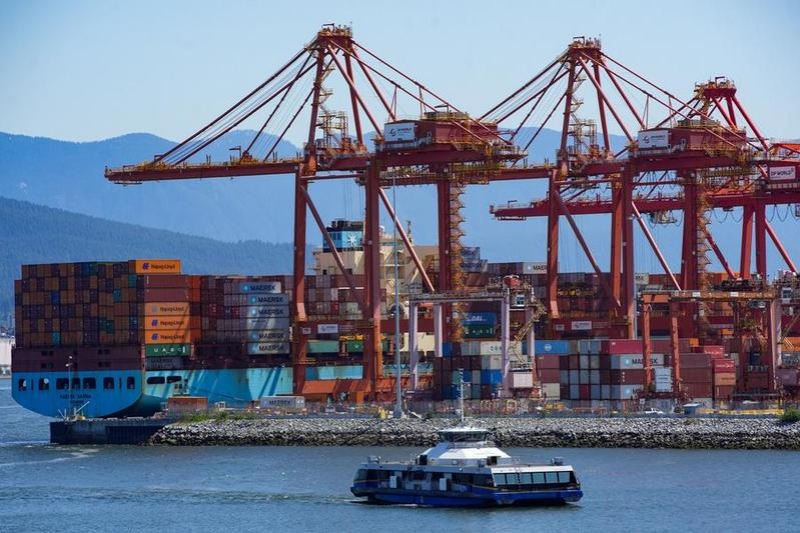Washington stands to lose if it drags the tariff dispute for long


Responding to US Trade Representative statement on Section 301 action on July 10 that proposed imposing hefty tariffs on more Chinese imports, Beijing said the US had overestimated the size of its trade deficit and China is not responsible for it. Instead, the deficit is the result of the low savings rate in the United States, the US dollar serving as the international reserve currency, the two countries' differences over the international division of labor, and the US' restrictions on high-tech exports to China, the Ministry of Commerce said.
There is, however, another reason for the US' "massive" trade deficit with China, say some US researchers, who believe that "trade hawks" in the Donald Trump administration have deliberately exaggerated the trade deficit figure by excluding US service exports, and that has its own risks.
At a March 23 news conference, Trump famously said: "Last year, we lost $500 billion on trade with China." That was fake news, said Alan Reynolds, a senior fellow at the Cato Institute, a Washington-based think tank. "The correct number was $335.7 billion once we count the $40.2 billion US surplus in services," Reynolds said, adding that if the $35 billion trade deficit Hong Kong had with the US were included-and rightly so, as Hong Kong is part of China-the US' trade deficit with the Chinese mainland-Hong Kong combined would be $300.6 billion in 2017, $200 billion less than what Trump claimed.
There's no excuse for not counting services when calculating trade, as the US is predominantly a service economy. Rising US service exports accounted for one-third of the total exports from January through May, and the US surplus in services shrunk the total deficit by 31 percent, Reynolds said, citing US Census Bureau data.
Private services accounted for 69 percent of the US' gross domestic product and 128.2 million jobs in June, while goods-producing industries together accounted for only 20.7 million jobs in June, the researcher wrote in an analytical report last week. "When President Trump and his trade war generals talk excitedly about bilateral trade deficits, they invariably talk only about goods-never services," Reynolds said.
US Commerce Secretary Wilbur Ross, for example, published an article titled Free Trade Is a Two-Way Street in The Wall Street Journal, writing only about "trade in goods" as though a third of US exports, the majority of US jobs and 69 percent of GDP are not worth mentioning.
In an interview with China Daily, Reynolds said that some US news reports often include the service sector when reporting on the overall trade balance, but exclude services when discussing trade with specific countries, such as China. For example, The New York Times reported on Feb 6 that: "The gap between Chinese goods imported to the United States and American goods exported to China rose to $375.2 billion last year, up from $347 billion the prior year . . . The overall United States trade deficit in goods and services with the world widened 12.1 percent to $566 billion last year, the largest gap since 2008."
Why were services included in the statistics on world trade but not in the data on trade with China? Reynolds said the writer and editor were either statistically ignorant or they deliberately tried to make the report more sensational by using the largest available figure. "President Trump and others who are mistakenly troubled by trade deficits with specific countries should at least get the facts straight," he said.
Gary Hufbauer, a nonresident senior fellow at the Peterson Institute for International Economics, too, said Trump is focusing on products that one can touch and feel-in other words, merchandise trade.
"This makes no sense, since the US is very strong in service exports, and his own business is a service firm," said Hufbauer, who earlier served the US Treasury as deputy assistant secretary for international trade and investment policy. "But his political identity is with manufacturing workers, so it helps his case to just cite merchandise trade numbers," Hufbauer said.
The US surplus with China in services has increased by a staggering 25-fold from 2003 to 2017, according to US official statistics.
The US-ignited trade conflict with China risks sapping the momentum of the US service economy, Hufbauer said, because China may decide to restrict US service companies from doing business in China as part of its retaliatory measures. "This will be unfortunate both for the firms and for China," he said.
Both Reynolds and Hufbauer said the Trump administration is "missing the mark" by hiking tariffs to protect the manufacturing industries and jobs, while ignoring the "indisputable fact" that the private service sector has accounted for the long-term growth of US employment over several decades.
Although the current US trade surplus with China in services may appear relatively small, it has increased from $1.7 billion in 2007 to $40.2 billion in 2017. If it continues doubling every five years, as it has over the past five years, it could reach $80 billion by 2022 and $160 billion by 2027, Reynolds said.
But what if the trade relations between the world's top two economies continue to deteriorate?
It will be the US' loss.
The author is deputy editor-in-chief of China Daily USA.


































